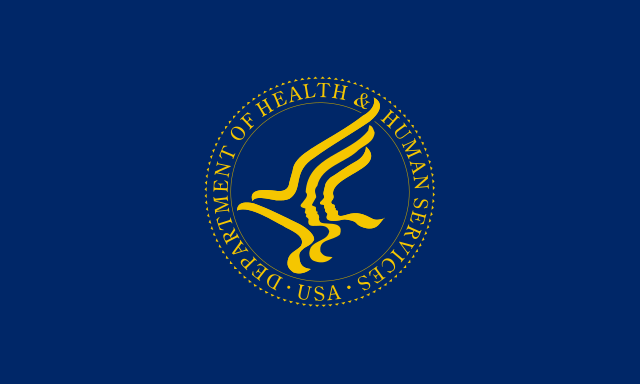Recent regulatory developments have helped provide greater clarity on requirements for digital accessibility in the US healthcare sector. In early May 2024 two separate rules were published by the Department of Health and Human Services (HHS) Office of Civil Rights (OCR). These rules support Section 504 of the Rehabilitation Act and the Affordable Care Act respectively. They also provide evidence of progress in harmonizing requirements when applying US disability laws to digital resources.
This post provides more details of each rule, and implications for organizations building digital resources that provide health-related services and programs.
This article provides information about accessibility laws and regulations, but is not legal advice. You should consult a lawyer for advice on specific legal issues or problems.
Regulations for Section 504 of the Rehabilitation Act
Section 504 of the Rehabilitation Act provides protections for people with disabilities who receive program benefits and services provided or funded by federal agencies. On May 1st, the United States Department of Health and Human Services (HHS) published a final rule titled Discrimination on the Basis of Disability in HHS Programs or Activities, clarifying how Section 504 of the Rehabilitation Act applies to programs and activities funded by HHS. This rule provides, amongst other things, specific accessibility requirements for websites, mobile applications and patient-facing kiosks provided by organizations covered under Section 504.
The following sections of the rule are of particular relevance to digital accessibility.
- Program Accessibility (§§ 84.21–84.23): Revisions to Subpart C
- Subpart H: Communications (§§ 84.77–84.81)
- Subpart I: Web, Mobile, and Kiosk Accessibility (§§ 80.82–80.88)
The Section 504 rule intentionally harmonizes language and requirements with the ADA where appropriate, including updating language around and definition of disability. The rule specifies Web Content Accessibility Guidelines (WCAG) Version 2.1 Level AA as the required technical standard of accessibility for covered web content and mobile applications, with certain specific exceptions. Significantly, the rule mirrors the requirements and exceptions specified in the Department of Justice’s recent ADA Title II rule for web content and mobile app accessibility.
The rules also cover kiosk accessibility, but do not provide specific technical requirements. Instead, kiosk accessibility requirements are limited to a general statement:
No qualified individual with a disability shall, on the basis of disability, be excluded from participation in, be denied the benefits of, or otherwise be subjected to discrimination under any program or activity of a recipient provided through kiosks. (§84.83)
HHS provides comments in the rule to explain the lack of technical requirements for kiosks, noting that the US Access Board is in the process of defining more detailed accessibility requirements for kiosks and other self-service closed systems. More information on this process is available in the Access Board’s Self Service Transaction Machines update. Given the importance of kiosks in delivering inclusive healthcare, we recommend following relevant kiosk accessibility standards and best practices to ensure that people with disabilities have equal access to information and services provided through kiosks in a healthcare setting.
Regulations for Section 1557 of the Affordable Care Act
On May 6, 2024, HHS published a final rule titled Nondiscrimination in Health Programs and Activities. This rule provides a range of requirements to help covered organizations meet the requirements of Section 1557 of the Affordable Care Act, which prohibits discrimination on the basis of disability and other characteristics including race, color, national origin, sex, and age, by health programs and activities that receive federal funding. Section 1557 references definitions of discrimination provided in Section 504 of the Rehabilitation Act and other civil rights legislation.
Sections of the rule with particular relevance to digital accessibility efforts include:
- Effective Communication for Individuals With Disabilities (§ 92.202)
- Accessibility of Information and Communication Technology for Individuals With Disabilities (§ 92.204)
The rule also specifically addresses discrimination in decision support tools, including the use of artificial intelligence in health programs and initiatives.
The rule does not define specific technical accessibility requirements. Instead, § 92.204 requires that covered entities meet the requirements for websites and mobile accessibility defined in the Section 504 rule.
Summary
Healthcare providers who receive federal funding and who provide programs and services through inaccessible websites, mobile apps and kiosks risk legal action by discriminating against people with disabilities. Suppliers of healthcare technology have opportunities to help providers meet their legal obligations, and to help improve accessibility and quality of healthcare by building accessible technology.
The publication of these rules should help make it easier for healthcare program and service providers to meet their obligations by providing accessible and inclusive technology, reducing the risk of unlawful discrimination against patients with disabilities. HHS has contributed to a wider movement towards a recognized minimum standard for digital accessibility by specifying WCAG 2.1 Level AA as a minimum accessibility requirement. This mirrors the requirements of the ADA Title II Rule on web content and mobile apps.
There are some clear limitations of these requirements, including the exceptions related to individualized password-protected documents, which are especially prevalent in healthcare. Nevertheless, the new rules should provide healthcare providers, technology vendors and content providers with a greater understanding of their digital accessibility expectations. In turn, it’s another welcome step towards more accessible healthcare services and programs for people with disabilities.
Image credit: Fry1989/United States Department of Health and Human Services

